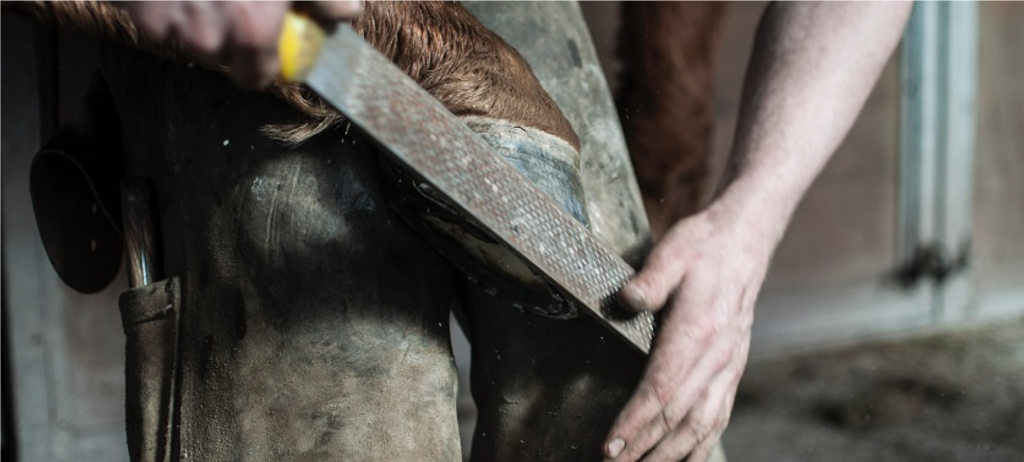Common Hoof Ailments
Abscesses
Hoof abscesses are a pocket of infection within the hoof, usually causing intense pain and acute lameness, Abscesses may be triggered by a puncture wound or any other disease process favouring bacterial growth such as thrush or sole bruises. Your vet or farrier can pare away the hoof to allow the abscess to drain and confirm the diagnosis. While some abscesses are unavoidable, good general care practices such as regular farriery, daily picking out of hooves and keeping the hooves dry and conditioned can all help to reduce the risk of abscesses occurring.
Sole Bruises
Also sometimes called stone bruises, sole bruises usually occur when horses stand on stones or hard, uneven ground. While in some cases a bruise may become visible on the sole, generally the lameness occurs before the bruise appears. The lameness associated with sole bruises can vary, and in some cases may not be evident until pressure is applied to the sore spot with hoof testers. If you suspect that your horse may have a bruised sole, you can try standing his hoof in a bucket of ice water to help reduce inflammation. If symptoms persist contact your veterinarian or farrier for further advice.
Wet, softened hooves are more likely to bruise, so keeping your horse's hooves clean and dry is one way to help reduce the likelihood of sole bruises occurring. Remember to pick your horse's hooves out daily to remove any stones and if stone bruises are a regular occurrence talk to your farrier about different shoeing or trimming techniques which may help. Another option often used by endurance riders are protective boots designed to cover the whole hoof when travelling over very hard or rocky terrain.
Seedy Toe (White Line Disease)
Seedy toe, or white line disease, is a condition where anaerobic bacteria or fungi invade the space between hoof wall layers. Once inside the microbes eat away at hoof tissue, causing it to become unstable and crumbly. In many cases seedy toe will not cause lameness unless severe, and may simply be detected by your farrier during regular visits. Treatment of seedy toe involves exposing the affected areas to air, creating an unfavourable environment for the anaerobic organisms within. Your farrier can do this by removing part of the hoof wall in the affected area and outfitting your horse with a supportive shoe while it grows out.
While not all the causes of seedy toe are well understood, keeping your horse on a regular farrier schedule, cleaning his hooves out daily and avoiding housing him in damp conditions can all help to reduce the risk of seedy toe.
Thrush
Thrush is an unpleasant smelling infection involving the collateral grooves and sulcus of the frog of the hoof. Along with a distinctive smell, thrush can easily recognised by a black discharge in the affected areas. Generally caused by bacteria but sometimes also fungi, thrush occurs generally as a consequence of poor hoof maintenance, unhygienic environmental conditions, poor conformation or a combination of all three.
Uncomplicated cases of thrush may be treated by removing the horse to a clean, dry environment. A vet or farrier may also need to pare away all of the diseased hoof tissue until healthy tissue is reached. Paring should then be followed with an antiseptic treatment such as Kelato Hoof Prime.


